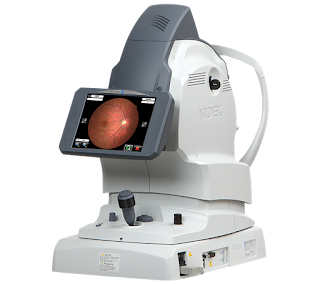Enhancing Glaucoma Diagnosis and Management with the Humphrey 750 Perimeter
Glaucoma, a
leading cause of irreversible blindness worldwide, underscores the critical
importance of early detection and precise monitoring in preserving vision. In
this context, the Humphrey 750 Perimeter emerges as a pivotal tool in the
armamentarium of eye care professionals. This article delves into the
significance of the Humphrey 750 Perimeter, exploring its features, benefits,
and impact on glaucoma diagnosis and management.
Understanding
the Humphrey 750 Perimeter:
The Humphrey 750 Perimeter is a
state-of-the-art device designed to assess visual field function with
exceptional accuracy and reliability. By employing sophisticated testing
algorithms and advanced psychophysical techniques, this instrument enables
clinicians to detect and monitor subtle changes in visual function associated with
glaucoma and other optic nerve disorders.
Key
Features and Functionality:
At the
heart of the Humphrey 750 Perimeter lies its cutting-edge technology, which
includes a comprehensive array of test patterns and stimulus parameters
tailored to evaluate various aspects of visual field function. From standard
automated perimetry to advanced testing protocols such as threshold testing and
short-wavelength automated perimetry (SWAP), this device offers versatility and
precision in assessing visual function across different disease stages.

Advantages
for Practitioners:
For eye
care professionals, the Humphrey 750 Perimeter offers several
advantages. Its intuitive interface and user-friendly software streamline the
testing process, enhancing workflow efficiency and reducing examination time.
Moreover, the device's ability to generate detailed and customizable reports
facilitates communication with patients and colleagues, enabling informed
decision-making regarding treatment and management strategies.
Empowering
Glaucoma Management:
In the
context of glaucoma management, the Humphrey 750 Perimeter plays a crucial role
in disease monitoring and progression assessment. By accurately measuring
visual field defects and detecting changes over time, this device enables
clinicians to tailor treatment strategies and optimize patient care.
Furthermore, its ability to quantify disease severity and functional impairment
aids in risk stratification and prognosis determination, guiding therapeutic
decisions and improving long-term outcomes for patients.
Patient
Experience and Compliance:
From the
patient's perspective, undergoing visual field testing with the Humphrey 750
Perimeter is generally well-tolerated and non-invasive. The device's automated
testing protocols and comfortable testing environment minimize patient
discomfort and anxiety, promoting greater compliance and adherence to follow-up
appointments. Additionally, the availability of normative data and visual aids
enhances patient understanding of their condition, fostering active engagement
in their care and treatment decisions.
Challenges
and Future Directions:
Despite its
numerous benefits, the integration of the Humphrey 750 Perimeter into
clinical practice may pose certain challenges, including cost considerations
and training requirements. However, ongoing advancements in technology and
increased accessibility are poised to overcome these obstacles, paving the way
for broader adoption and utilization of this indispensable diagnostic tool in
the management of glaucoma and other optic nerve disorders.



Comments
Post a Comment